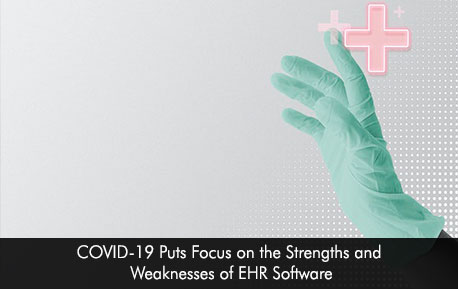With the COVID-19 pandemic hitting the whole world it has shed light on the fact that Electronic Health Records Software systems are large and can get slow to rapidly adapt to new changes and demands in their workflows. The robust software systems are facing some weaknesses but the important part is that the health system can plan around them and turn these weaknesses into strengths that can help combat the COVID-19 virus.
COVID-19 and EHR Software systems
- The need for regular updates
During the pandemic, EHR software optimization and quick and rapid updates will be a challenge for the software systems. Timely EHR software optimization is crucial as it upgrades the system to enhance clinical productivity and which ultimately improves patient care and efficiency. EHR software vendors in the United States have countered this challenge by rolling out updates to their software systems such as EPIC EMR software released COVID-19 updates to reduce clinician burnout and improve productivity.
- Interoperability
Interoperability is the key to share patient data across platforms with ease. During the outbreak of a pandemic, interoperability becomes even more crucial for EHR software systems as data from diagnostic tests confirmed positive cases and the total number of tests needs to flow without any restrictions without having to compromise on the security and protection of data shared. The current capabilities of Electronic Medical Records (EMR) software systems are unable to scale to hundreds and thousands of patients. Through the use of API’s application programming interfaces, the ability of software systems to share data securely and effectively in health crises can greatly improve.
- EHR software architecture
Despite some of the flaws and drawbacks in the EHR software architecture, we cannot ignore that these powerful systems are an advantage during the pandemic. Through these software systems, healthcare systems and providers are able to track and report abnormal conditions more quickly as compared to traditional paperwork methods. EHR software architecture helps systems and organizations to modify protocols more consistently.
Conclusion
It is very essential for software vendors to make sure that the systems are regularly updated with data backups and functioning properly. These recent backups need to be tested on a consistent basis to make sure they are completely restored. Usually, emergency situations are never tested, and not being prepared leads to a big disaster for healthcare systems. If you don’t have a contingency plan it’s still not too late, make sure your EHR software is upgraded to handle the many challenges of the COVID-19 pandemic. Working together to battle against the pandemic by free and secure data sharing across healthcare parties can make a great difference in patient outcomes levels.







